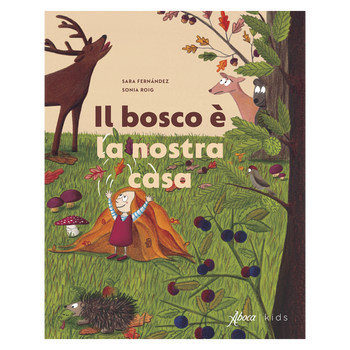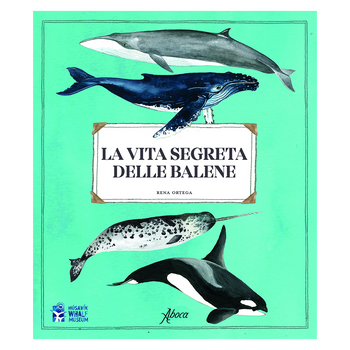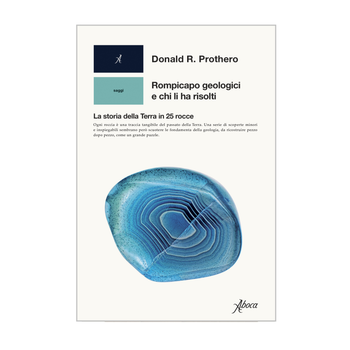You have no items in your shopping cart.
La più bella pittura del mondo La più bella pittura del mondo
Piero della Francesca nelle parole e nello sguardo di scrittori, poeti, artisti Piero della Francesca nelle parole e nello sguardo di scrittori, poeti, artisti
Attilio Brilli Attilio Brilli
€35,00
"In this book, Attilio Brilli offers a new way of approaching Piero della Francesca's work through the words of narrators, essayists, poets, artists, scientists and philosophers from different nationalities and cultural traditions".
"In this book, Attilio Brilli offers a new way of approaching Piero della Francesca's work through the words of narrators, essayists, poets, artists, scientists and philosophers from different nationalities and cultural traditions".
Availability:
In Stock
Sku: LIBPITMOND
ISBN/EAN: 9788855230841
In this book, Attilio Brilli offers a new way of approaching Piero della Francesca's work through the words of narrators, essayists, poets, artists, scientists and philosophers from different nationalities and cultural traditions - including Aldous Huxley, Albert Camus, John Dos Passos, Iris Murdoch, Giorgio Bassani, Giuseppe Ungaretti, Piero Calamandrei, Mario Luzi, Fernando Botero, Yves Bonnefoy, John Berger and many others. Their reflections illuminate aspects of the artist's masterpieces that have little connection with the history of art. Indeed, in this volume, Piero is no longer an object of analysis, but rather an agent who can interact with the modern world.
While it makes little sense to speak of a journey or pilgrimage when referring to Raphael, Michelangelo, or Caravaggio, in the case of Piero, the only way to get to know him has always been to go and find him in his home territory. Piero is a perfect example of an artist whose works are composed in a distinct and confined radius, the fulcrum of which is Sansepolcro, with Arezzo to the west and Urbino and Rimini to the east.
As we walk along this route - internationally known as "The Piero della Francesca Trail" - we retrace the footsteps of the painter who travelled to the courts of the Montefeltro and Malatesta families. This itinerary rewards us with the fresco cycle of the Legend of the True Cross in Arezzo, the Madonna del Parto di Monterchi, the Resurrection, the Madonna della Misericordia and the fragment of the San Giuliano in Sansepolcro, the Flagellation of Christ and the Madonna di Senigallia in Urbino and the Malatesta fresco in Rimini.
Piero della Francesca fell on the cusp of modernity, one of those meteorites so rare that they cannot be compared to anything that came before or since. His rare and precious genius was, and in some ways still is, the object of a presumptuously elitist, intimately exclusive cult. One can draw various comparisons with his works. Certain fragments may flash unexpectedly in the memory, such as the knights in the Battle of Constantine who appear in Derek Walcott's Another Life.
One may react in the same way as Tarkowskji, speechless before the Madonna del parto, destined to become the iconic mother of the film Nostalgia; or again like Mario Luzi, stunned by the portentous, unexpected "ambush" of the Resurrection in Sansepolcro. This momentary lapse, this overlap of interfering memories, is the insight of human genius that interrupts the flux of time and suspends it. It is here, in this sudden suspension, that the amnesiac symbiosis takes place, allowing the visitor to participate in the fragile "eternity " of the work of art.
Attilio Brilli (1936), Professor of Anglo-American Literature, is one of Italy's leading authorities on travel literature. His books include Mercanti avventurieri. Storie di viaggi e di commerci (2013), Gerusalemme, La Mecca, Roma. Storie di pellegrinaggi e pellegrini (2014), Il grande racconto del viaggio in Italia. Itinerari di ieri per i viaggiatori di oggi (2014), Il grande racconto dei viaggi d’esplorazione, di conquista e d’avventura (2015), Il grande racconto delle città italiane (2016), Gli ultimi viaggiatori nell’Italia del Novecento (2018) and Le viaggiatrici del Grand Tour. Storie, amori, avventure (2020). He has also edited the publication Opere (1982) by R.L. Stevenson in the Mondadori series “I Meridiani”.
In this book, Attilio Brilli offers a new way of approaching Piero della Francesca's work through the words of narrators, essayists, poets, artists, scientists and philosophers from different nationalities and cultural traditions - including Aldous Huxley, Albert Camus, John Dos Passos, Iris Murdoch, Giorgio Bassani, Giuseppe Ungaretti, Piero Calamandrei, Mario Luzi, Fernando Botero, Yves Bonnefoy, John Berger and many others. Their reflections illuminate aspects of the artist's masterpieces that have little connection with the history of art. Indeed, in this volume, Piero is no longer an object of analysis, but rather an agent who can interact with the modern world.
While it makes little sense to speak of a journey or pilgrimage when referring to Raphael, Michelangelo, or Caravaggio, in the case of Piero, the only way to get to know him has always been to go and find him in his home territory. Piero is a perfect example of an artist whose works are composed in a distinct and confined radius, the fulcrum of which is Sansepolcro, with Arezzo to the west and Urbino and Rimini to the east.
As we walk along this route - internationally known as "The Piero della Francesca Trail" - we retrace the footsteps of the painter who travelled to the courts of the Montefeltro and Malatesta families. This itinerary rewards us with the fresco cycle of the Legend of the True Cross in Arezzo, the Madonna del Parto di Monterchi, the Resurrection, the Madonna della Misericordia and the fragment of the San Giuliano in Sansepolcro, the Flagellation of Christ and the Madonna di Senigallia in Urbino and the Malatesta fresco in Rimini.
Piero della Francesca fell on the cusp of modernity, one of those meteorites so rare that they cannot be compared to anything that came before or since. His rare and precious genius was, and in some ways still is, the object of a presumptuously elitist, intimately exclusive cult. One can draw various comparisons with his works. Certain fragments may flash unexpectedly in the memory, such as the knights in the Battle of Constantine who appear in Derek Walcott's Another Life.
One may react in the same way as Tarkowskji, speechless before the Madonna del parto, destined to become the iconic mother of the film Nostalgia; or again like Mario Luzi, stunned by the portentous, unexpected "ambush" of the Resurrection in Sansepolcro. This momentary lapse, this overlap of interfering memories, is the insight of human genius that interrupts the flux of time and suspends it. It is here, in this sudden suspension, that the amnesiac symbiosis takes place, allowing the visitor to participate in the fragile "eternity " of the work of art.
Attilio Brilli (1936), Professor of Anglo-American Literature, is one of Italy's leading authorities on travel literature. His books include Mercanti avventurieri. Storie di viaggi e di commerci (2013), Gerusalemme, La Mecca, Roma. Storie di pellegrinaggi e pellegrini (2014), Il grande racconto del viaggio in Italia. Itinerari di ieri per i viaggiatori di oggi (2014), Il grande racconto dei viaggi d’esplorazione, di conquista e d’avventura (2015), Il grande racconto delle città italiane (2016), Gli ultimi viaggiatori nell’Italia del Novecento (2018) and Le viaggiatrici del Grand Tour. Storie, amori, avventure (2020). He has also edited the publication Opere (1982) by R.L. Stevenson in the Mondadori series “I Meridiani”.
Release date: 2021
Dimensions: cm 15 x 22,5
Pag. 264
Release date: 2021
Dimensions: cm 15 x 22,5
Pag. 264












